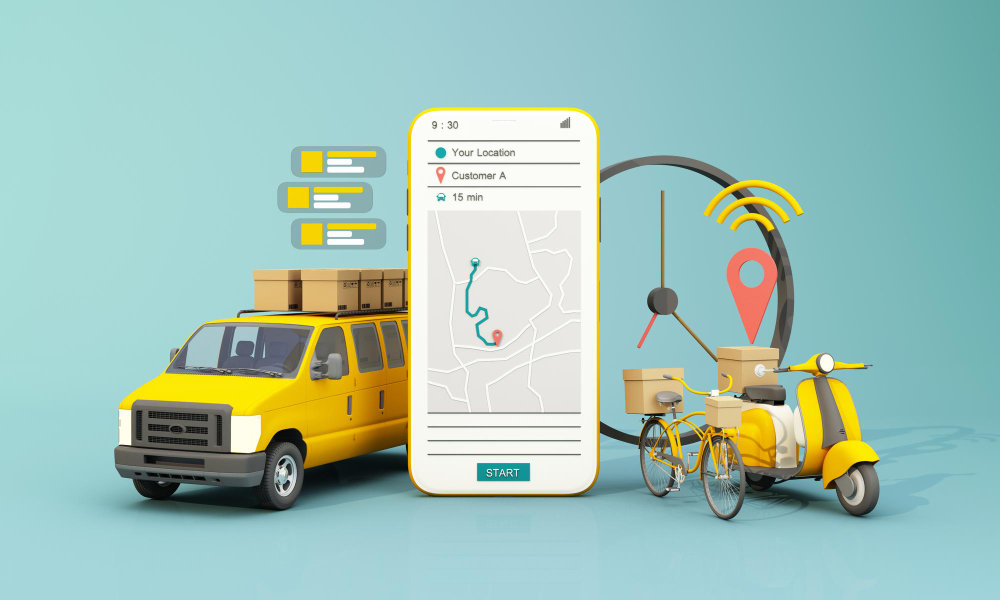Introduction: A Global Transit Problem Still Waiting for a Scalable Fix
From Lagos to London, Bangalore to Berlin, the first-and-last-mile problem is a universal mobility failure point. It's the reason commuters abandon public transport, the gap that makes or breaks e-commerce logistics, and the Achilles heel of global urban sustainability efforts.
Yet, it remains largely unsolved—because solving it requires:
-
Deep understanding of urban complexity
-
Integration of physical infrastructure with real-time digital systems
-
Hyper-local adaptation at global scale
That’s where Bay Area companies come in.
Whether you're a product leader at a Series B micromobility startup in Palo Alto, a CTO at a freight optimization company in Oakland, or a platform architect building transit APIs in Mountain View—you’re in the business of solving global problems.
And the first-and-last-mile challenge is one of the biggest.
Why the First-and-Last-Mile Problem Still Persists
Despite billions invested in transit and mobility, this challenge endures because it’s:
-
Fragmented: Public transit, ride-share, micromobility, and e-commerce delivery often operate in silos.
-
Unpredictable: Demand varies by time, geography, weather, and socioeconomics.
-
Data-choked: Real-time, multimodal data integration is still elusive in most markets.
-
Operationally intensive: Scaling to Tier-2 and Tier-3 cities globally requires boots-on-ground execution and constant iteration.
For Bay Area companies, solving this means building globally adaptable, API-driven, AI-augmented platforms—and doing it without being slowed down by traditional team-building and scaling constraints.
Where Bay Area Innovators Are Already Winning
Companies in the Bay Area are already making dents in this global challenge:
-
Via (SF) is deploying demand-responsive shuttles across Europe and the Middle East.
-
TIER’s North American R&D (Sunnyvale) is pioneering e-scooter fleet optimization algorithms.
-
Swiftly (San Francisco) is powering real-time passenger data for 150+ transit agencies globally.
-
Zipline (South San Francisco) is solving last-mile healthcare delivery via autonomous drones in Africa.
But we’re still at 10% of what’s possible.
The next wave of first-and-last-mile innovation will demand even greater agility, data precision, and scalable deployment models.
The Tech Stack Required to Win
Here’s what Bay Area companies are building—and what they’ll need to scale next:
AI + Machine Learning
-
Predict rider demand in dense and dispersed areas
-
Optimize delivery or pickup routes in real time
-
Adapt dynamically to events (weather, construction, crowd surges)
IoT + Edge Sensing
-
Monitor scooter fleets, smart transit hubs, delivery lockers
-
Track vehicle health, curb activity, traffic congestion
API-First Mobility Infrastructure
-
Integrate seamlessly with public transit, TSPs, mapping platforms
-
Enable MaaS (Mobility-as-a-Service) models across geographies
Cloud-Native Scalability
-
Launch services in one city, scale to 30 more in 6 months
-
Localize UX, pricing, payments, and compliance dynamically
Geospatial Intelligence
-
Understand hyperlocal variations in demand, risk, and efficiency
-
Build layered mobility profiles by district, block, or corridor
Execution Bottleneck: The Hidden Killer of Innovation
The real risk Bay Area companies face? Execution drag.
-
Your Series B just closed, but engineering velocity isn’t scaling as fast as sales.
-
Your first five cities are live, but now you need multilingual onboarding flows and compliance modules for 12 more.
-
Your AI pilot worked in SF, but localization in São Paulo or Jakarta is breaking the model.
This is where many brilliant transportation tech companies stall—not for lack of ideas, but for lack of execution bandwidth.
Virtual Delivery Center (VDC): Your Global Execution Engine
What is a Virtual Delivery Center?
A VDC is an on-demand, cloud-based, full-stack execution model that brings together pre-vetted specialists in AI, data engineering, mobile, API integration, and transit UX—ready to build, test, and deploy alongside your core team.
You retain product ownership. The VDC handles delivery.
Why Bay Area Companies Need VDCs Now
✅ Scale Without Bloat
Don’t burn capital hiring full-time teams in 5 countries. Use the VDC to spin up agile pods for each global launch.
✅ Go From Concept to Code Fast
Have a new feature idea based on user feedback in Bogotá? A VDC can deliver a prototype in 2 weeks and production code in 6.
✅ Plug Tech Gaps, Not People Gaps
Need 2 senior Flutter engineers, a computer vision model tuner, and a backend architect fluent in GTFS feeds? Done.
✅ Bridge Product + Ops
Use the VDC to build the ops dashboard your city teams have been begging for—without derailing your product roadmap.
✅ Deliver Across Languages, Devices, Regulations
Let the VDC handle localization, Android compatibility for low-end devices, and GDPR compliance in Europe—while your core team builds core IP.
Real-World Example: Scaling a First-Mile Platform into 12 Cities
A Bay Area-based transit API startup launched successfully in 3 U.S. cities. Expansion was approved into Latin America, Southeast Asia, and the EU.
They partnered with a VDC via AiDOOS to:
-
Build localized onboarding modules in 4 languages
-
Create an analytics dashboard for agency partners
-
Integrate real-time feeds from 8 new mobility partners
-
Ensure WCAG and GDPR compliance across regions
Results:
-
Time to launch in new cities dropped from 4 months to 6 weeks
-
Burn rate stayed flat despite doubling the delivery scope
-
Core team remained focused on innovation, not integration
Conclusion: The Bay Area’s Role in Solving the World’s Transit Puzzle
The world doesn’t just need more scooters or shuttles—it needs intelligent, scalable, connected systems that make every step of the journey efficient and equitable.
And Bay Area companies are uniquely positioned to build those systems—but they need the right execution engine.
The Virtual Delivery Center model from AiDOOS gives you the flexibility, speed, and technical depth to move fast, execute globally, and retain your innovation edge.
Because when you’re building the future of movement, how you move matters.
Want to scale faster without losing focus?
Let AiDOOS build your Virtual Delivery Center and take care of the “how” while you focus on the “what.”

